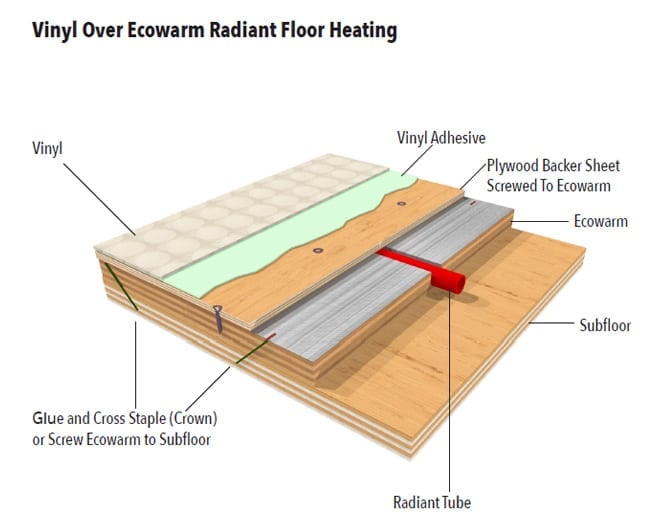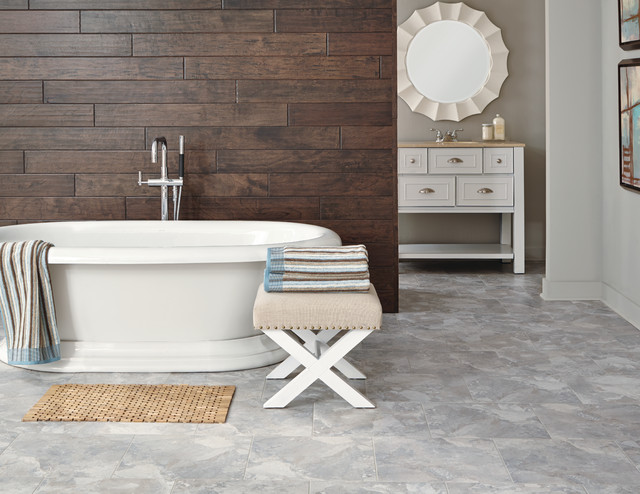Luxury Heated Vinyl Flooring Overview
Vinyl flooring is a rapidly proliferating category of flooring products with characteristics, installation requirements, and warranties that require careful evaluation and understanding before installing over Ecowarm or other radiant floor heating products. This applies especially when installing LVP over radiant heat, as compatibility with heating elements must be confirmed. And those searching for the best vinyl plank flooring for radiant heat should focus on compatibility and long-term performance.
Our purpose is to provide a general understanding of the issues you should consider before installing vinyl flooring for radiant heat over Ecowarm or other methods of installing radiant floor heat.
Use Extreme Caution: Environmental Issues with Vinyl Flooring
Vinyl flooring is more environmentally sensitive than many other flooring products in that it has a high rate of expansion and contraction with changes in temperature, as well as being sensitive to changes in humidity. This becomes especially critical when using heated floors under LVP, where temperature consistency must be maintained.
Vinyl flooring products are predominantly made from recycled petroleum-based plastics. For environmental and green-conscious customers, the petrochemical basis and potential for significant outgassing of toxic volatiles are a real concern when choosing heated vinyl plank flooring.
Due to the recent introduction of numerous vinyl flooring products, most of them have little history of use over radiant floor heat. Additionally, many of the limitations in the warranties are extremely hard to comply with, particularly with newer products like LVP over heated floor systems.
Outgassing from Vinyl Floors
At Ecowarm we’ve made major efforts to design, engineer, and manufacture an environmentally responsible product. We are not scientists, chemists, or toxicologists who are able to fully examine issues of outgassing from heated LVP flooring products.



 Thin flooring products like vinyl are sensitive to higher temperatures on the floor surface that can result in stripping or deformation. We recommend the use of adjustable high limit slab sensor control from your thermostat to avoid unintended high temperature water reaching the floor. This is especially relevant for installations involving heated floor under LVP and heated floor vinyl plank setups, where consistent surface temperatures are key.
Thin flooring products like vinyl are sensitive to higher temperatures on the floor surface that can result in stripping or deformation. We recommend the use of adjustable high limit slab sensor control from your thermostat to avoid unintended high temperature water reaching the floor. This is especially relevant for installations involving heated floor under LVP and heated floor vinyl plank setups, where consistent surface temperatures are key.







